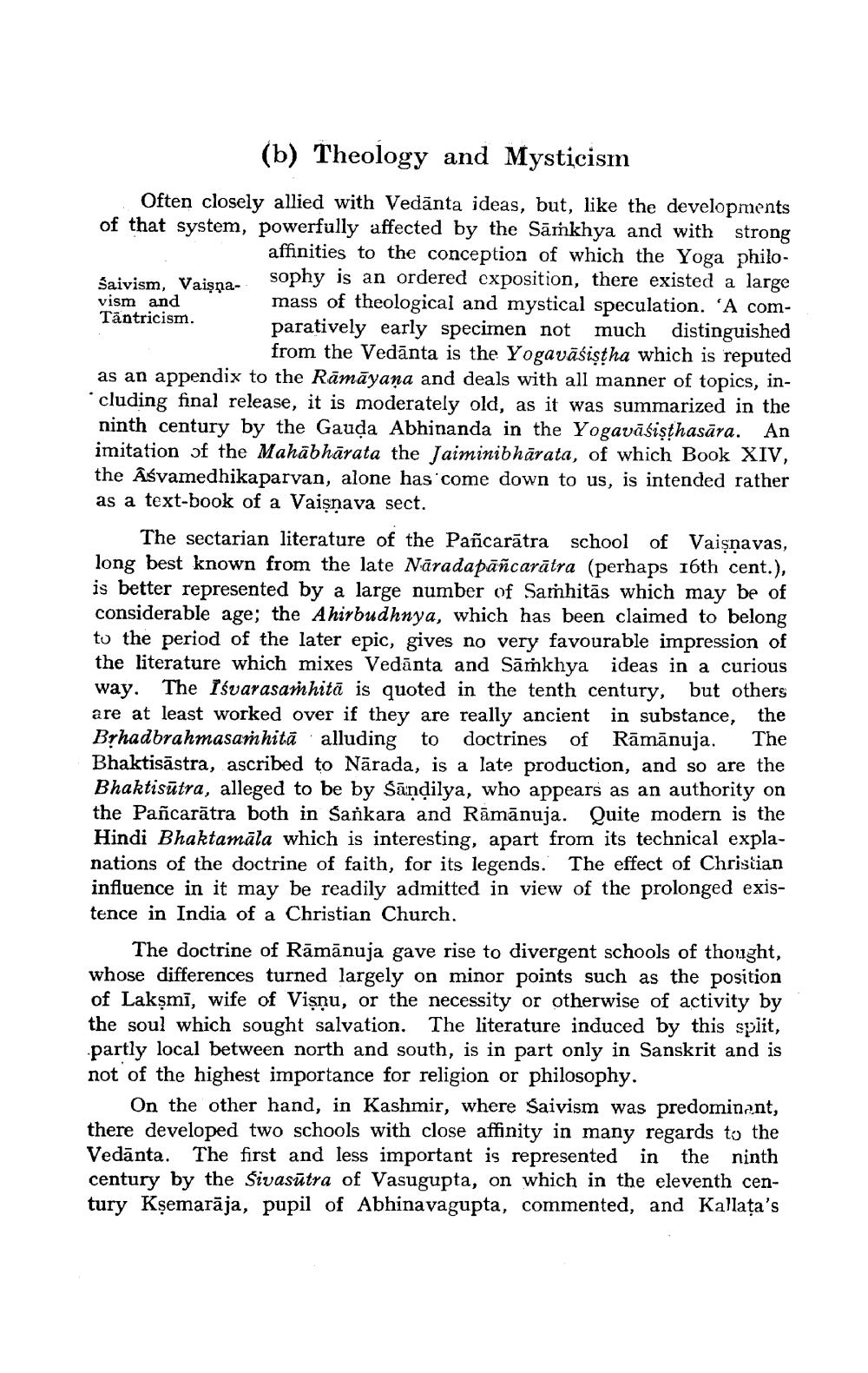________________
(b) Theology and Mysticism
Often closely allied with Vedānta ideas, but, like the developments of that system, powerfully affected by the Sārkhya and with strong
affinities to the conception of which the Yoga philoSaivism, Vaisna
sophy is an ordered exposition, there existed a large vism and
mass of theological and mystical speculation. 'A comTāntricism.
paratively early specimen not much distinguished
from the Vedānta is the Yogavāśistha which is reputed as an appendix to the Rāmāyana and deals with all manner of topics, including final release, it is moderately old, as it was summarized in the ninth century by the Gauda Abhinanda in the Yogavāśişthasāra. An imitation of the Mahābhārata the Jaiminibhārata, of which Book XIV, the Aśvamedhika parvan, alone has come down to us, is intended rather as a text-book of a Vaisnava sect.
The sectarian literature of the Pañcarātra school of Vaisnavas, long best known from the late Nārada pāñcarātra (perhaps 16th cent.), is better represented by a large number of Sarhitās which may be of considerable age; the Ahirbudhnya, which has been claimed to belong to the period of the later epic, gives no very favourable impression of the literature which mixes Vedānta and Sārkhya ideas in a curious way. The Iśvarasamhitā is quoted in the tenth century, but others are at least worked over if they are really ancient in substance, the Byhadbrahmasamhitā alluding to doctrines of Rāmānuja. The Bhaktisāstra, ascribed to Närada, is a late production, and so are the Bhaktisūtra, alleged to be by Sāndilya, who appears as an authority on the Pañcarātra both in Sankara and Rāmānuja. Quite modern is the Hindi Bhaktamāla which is interesting, apart from its technical explanations of the doctrine of faith, for its legends. The effect of Christian influence in it may be readily admitted in view of the prolonged existence in India of a Christian Church.
The doctrine of Rāmānuja gave rise to divergent schools of thought, whose differences turned largely on minor points such as the position of Lakşmī, wife of Vişnu, or the necessity or otherwise of activity by the soul which sought salvation. The literature induced by this split, partly local between north and south, is in part only in Sanskrit and is not of the highest importance for religion or philosophy.
On the other hand, in Kashmir, where Saivism was predominant, there developed two schools with close affinity in many regards to the Vedānta. The first and less important is represented in the ninth century by the Sivasūtra of Vasugupta, on which in the eleventh century Ksemarāja, pupil of Abhinavagupta, commented, and Kallata's




